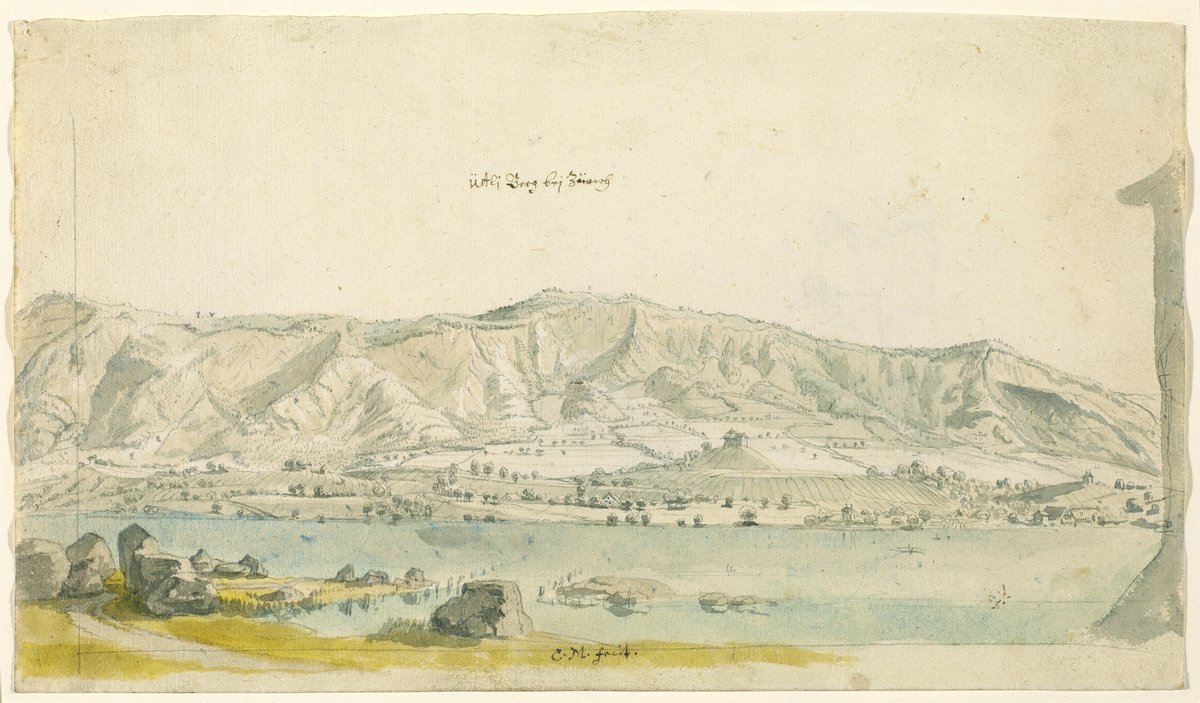Lake Zurich with the Üetliberg

Conrad Meyer
Der Zürichsee mit dem Üetliberg, von Stadelhofen aus gesehen, um 1655
Graphit, Pinsel und Feder in Grau, grau und hellbraun laviert, aquarelliert, 18 x 31,3 cm, Kunsthaus Zürich, Grafische Sammlung, Geschenk Johann Jakob Meyer, 1840
A special guest visited Zurich in 1655: the Dutch landscape painter Jan Hackaert, who we also encounter as a seated figure in the large Löntschtal drawing. For Conrad Meyer, who was so interested in nature and Dutch art, this was a unique opportunity to discuss painting directly with a Dutch artist and to work with him – preferably in the open air. The young Hackaert, on the other hand, must have appreciated being welcomed by the city's leading painter and being able to explore the local surroundings, which he was obviously interested in, alongside him. Numerous drawings by the two show that they often went on excursions together to draw outside. Initially, their tours took them into the surrounding countryside; outside the city walls by the lake or as far as Herrliberg, where the welcome guests met local personalities.

Jan Hackaert
Blick vom Stadelhofen gegen Westen mit Albiskette und dem Uetliberg, Mai 1655
Feder in Braun, braun- bis blaugrau laviert, 45,5 x 57,5 cm, Österreichische Nationalbibliothek, Wien, 389.030-F. K., Bd. 13:22, fol. 54–55
The view of Lake Zurich with the Uetliberg, which was drawn by both artists, is an early testimony to their collaborative work. Their location was near today's Bellevue on the shore of the lake, next to the city fortifications of the time. As the view of the mountain, the recognizable boulders on the shore and the cut tower on the right show, they were sitting in the same place. Despite the similar disposition, their designs are very different and refer to their own – also figurative – view of the area.
The sheet by Meyer and its counterpart by Hackaert are telling documents of how two different artists worked side by side in the mid-17th century and how the landscape was received differently in this close exchange. Meyer's interest was focused on the topography of his surroundings as an object of study, which is why he also labeled it. For Hackaert, it is an unknown region, the appearance of which he wants to capture conscientiously and at the same time pictorially. What unites them is the search for motifs in the great outdoors, which is not subject to a scientific or representative purpose, but is fed solely by artistic curiosity.


